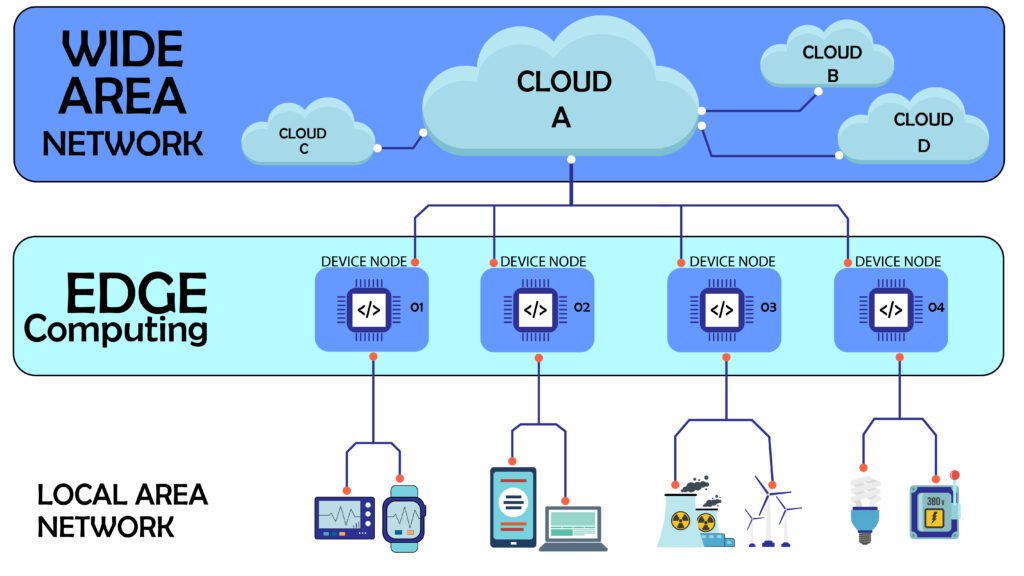What makes a good Edge device for IoT?
Posted by Tim Matteson
An edge device is the network component that is responsible for connecting a local area network to an external or wide area network, which can be accessed from anywhere. Edge devices offer several new services and improved outcomes for IoT deployments across all markets. Smart services that rely on high volumes of data and local analysis can be deployed in a wide range of environments.
Edge device provides the local data to an external network. If protocols are different in local and external networks, it also translates this information, and make the connection between both network boundaries. Edge devices analyze diagnostics and automatic data populating; however, it is necessary to make a secure connection between the field network and cloud computing. In the event of loss of internet connection or cloud crash edge device will store data until the connection is established, so it won’t lose any process information. The local data storage is optional and not all edge devices offer local storage, it depends on the application and service required to implement on the plant.
How does an edge device work?
An edge device has a very straightforward working principle, it communicates between two different networks and translates one protocol into another. Furthermore, it creates a secure connection with the cloud.
An edge device can be configured via local access and internet or cloud. In general, we can say an edge device is a plug-and-play, its setup is simple and does not require much time to configure.
Why should I use an edge device?
Depending on the service required in the plant, the edge devices will be a crucial point to collect the information and create an automatic digital twin of your device in the cloud.
Edge devices are an essential part of IoT solutions since they connect the information from a network to a cloud solution. They do not affect the network but only collect the data from it, and never cause a problem with the communication between the control system and the field devices. by using an edge device to collect information, the user won’t need to touch the control system. Edge is one-way communication, nothing is written into the network, and data are acquired with the highest possible security.
Edge device requirements
Edge devices are required to meet certain requirements that are to meet at all conditions to perform in different secretions. This may include storage, network, and latency, etc.
Low latency
Sensor data is collected in near real-time by an edge server. For services like image recognition and visual monitoring, edge servers are located in very close proximity to the device, meeting low latency requirements. Edge deployment needs to ensure that these services are not lost through poor development practice or inadequate processing resources at the edge. Maintaining data quality and security at the edge whilst enabling low latency is a challenge that need to address.
Network independence
IoT services do not care for data communication topology. The user requires the data through the most effective means possible which in many cases will be mobile networks, but in some scenarios, Wi-Fi or local mesh networking may be the most effective mechanism of collecting data to ensure latency requirements can be met.
Data security
Users require data at the edge to be kept secure as when it is stored and used elsewhere. These challenges need to meet due to the larger vector and scope for attacks at the edge. Data authentication and user access are as important at the edge as it is on the device or at the core. Additionally, the physical security of edge infrastructure needs to be considered, as it is likely to hold in less secure environments than dedicated data centers.
Data Quality
Data quality at the edge is a key requirement to guarantee to operate in demanding environments. To maintain data quality at the edge, applications must ensure that data is authenticated, replicated as and assigned into the correct classes and types of data category.
Flexibility in future enhancements
Additional sensors can be added and managed at the edge as requirements change. Sensors such as accelerometers, cameras, and GPS, can be added to equipment, with seamless integration and control at the edge.
Local storage
Local storage is essential in the event of loss of internet connection or cloud crash edge device will store data until the connection is established, so it won’t lose any process information. The local data storage is optional and not all edge devices offer local storage, it depends on the application and service required to implement on the plant

